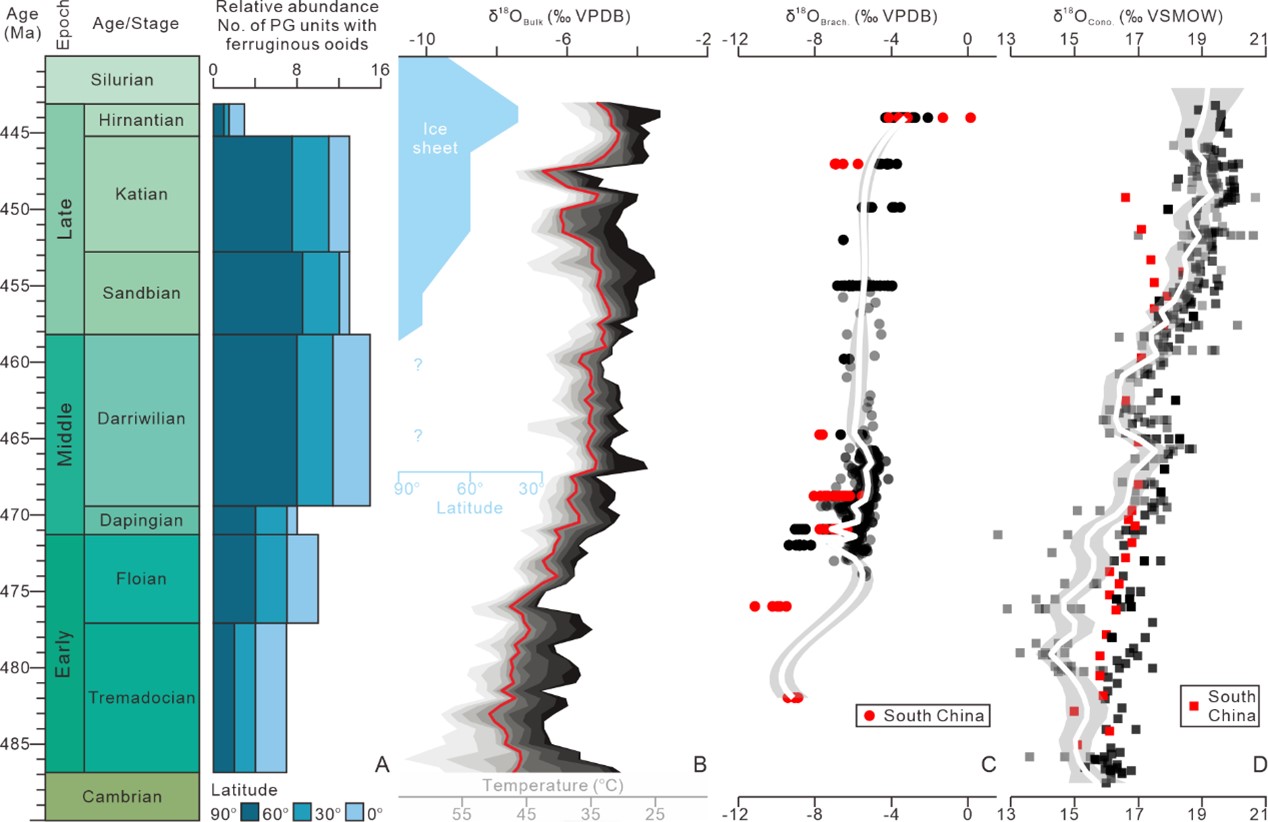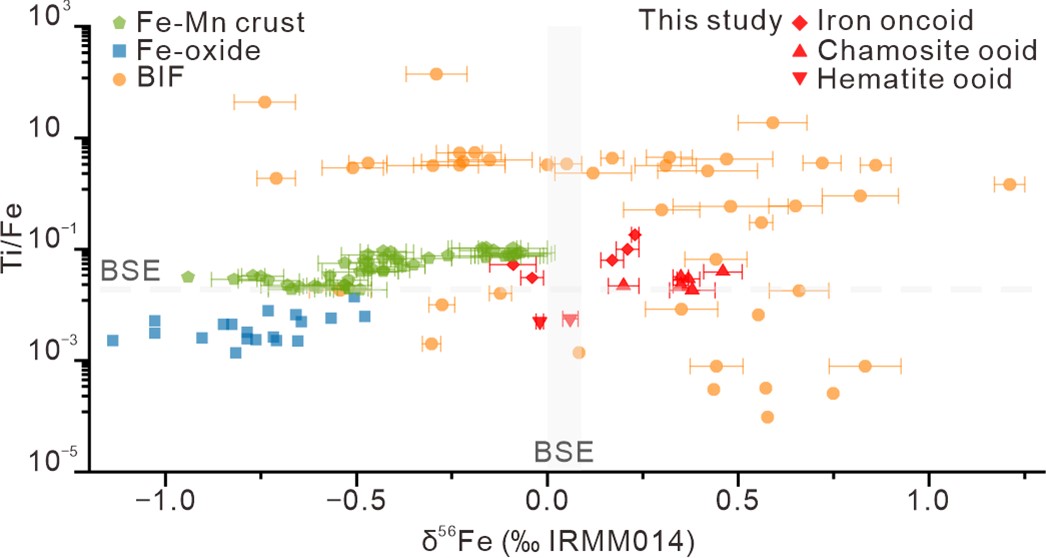Phanerozoic ooidal ironstones represent significant sedimentary iron deposits globally, which have attracted extensive study because of their economic potential and significance for understanding paleoenvironment and past tectonic activity. These deposits are traditionally linked to warm tropical-subtropical climate. The ooidal ironstone of Ordovician, however, widespread distributed in high paleolatitude Gondwana areas such as Central Europe, the Mediterranean, and North Africa, in association with cool-water sedimentary environments or cool-water fauna. This contradicts the warm tropical-subtropical setting usually proposed for ooidal ironstone of other eras, which remains a longstanding geological paradox.
Recently, Dr. LUAN Xiaocong and Professors WU Rongchang and ZHAN Renbin from Nanjing Institute of Geology and Palaeontology, Chinese Academy of Sciences (NIGPAS), in collaboration with Canadian colleagues, have examined a set of ooidal ironstone from Middle–Upper Ordovician in South China. As a rare warm-water, lagoonal case of Ordovician ooidal ironstone based on our previous works, together with coeval relatively cool-water ferruginous ooids and microbialites in South China, it could serve as an unique window to comprehensively investigate and multidisciplinarily explore the environmental significance of Ordovician ferruginous deposits in terms of their gradients of water temperature and sedimentary environments.
The study reveals a distribution overlap between global ooidal ironstone and upwelling zones. Their abundances temporarily correlate with global oxygen isotope positive excursions, suggesting their Darriwilian (late Middle Ordovician) peak probably marks the Ordovician climate transition from greenhouse to icehouse conditions. To explain this phenomenon, the study proposes that their formation was not directly controlled by water temperature but linked to microbial activity and upwelling driven by frequent cool-water incursions from Gondwana. Active upwelling transported deep anoxic ferruginous waters to surface, where microbes facilitated iron precipitation, termed the "microbial iron factory", supported by ultrastructure observations and iron isotope evidence.
The mechanism could analogize the Cenozoic Monterey Event, emphasizing intensified upwelling as a key response to global climate change. This explains the paleogeographical distribution of Ordovician ferruginous ooids along cool-water peri-Gondwana areas, and the suggested intensified upwelling might indicate the existence of ice sheet during the Darriwilian from sedimentological perspective. Besides, as a multidisciplinary case work, this study provides new insights into the environmental background of Ordovician radiation, which has recently published online in an international journal Geology.
The study was funded by the National Key Research and Development Program of China, the Strategic Priority Research Program of the Chinese Academy of Sciences, and the National Natural Science Foundation of China.
Reference: Luan, X., Sproat, C. D., Jin, J., Pufahl, P. K., Wu, R., and Zhan, R., 2025, Upwelling-related ferruginous ooids, microbialites, and the Darriwilian tipping point of Ordovician climate: Geology, https://doi.org/10.1130/G53374.1.

Fig.1 Temporal distribution of Ordovician ferruginous ooids and its comparison with ocean temperature trends as revealed by multi-archive oxygen isotope compositions.

Fig.2 Paleogeographic distribution and schematic depositional model of Middle–Late Ordovician ferruginous deposits in South China.

Download:
